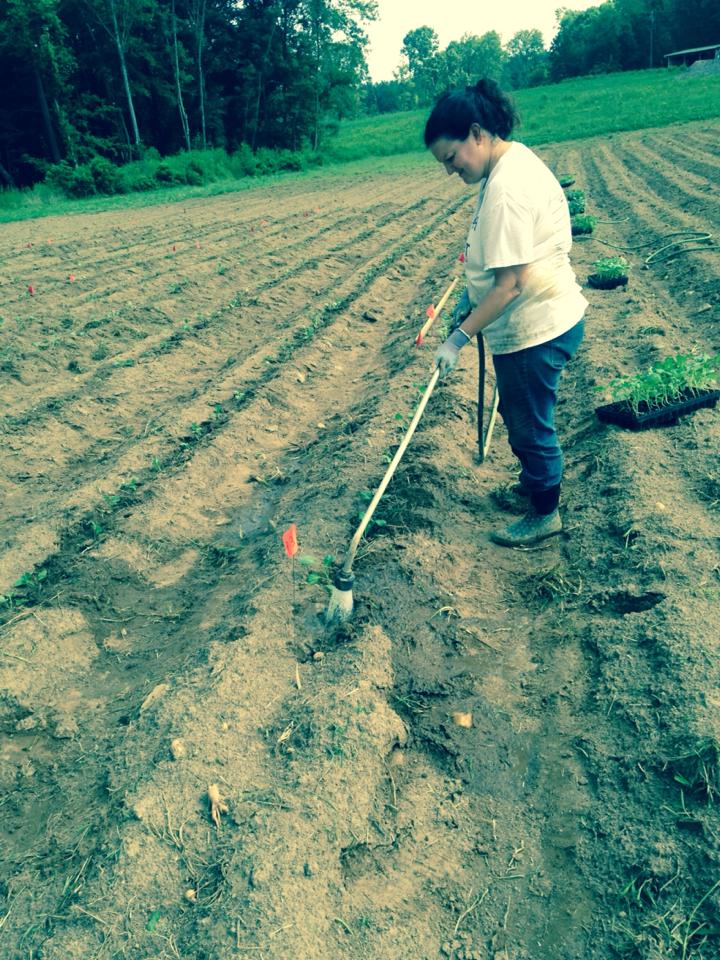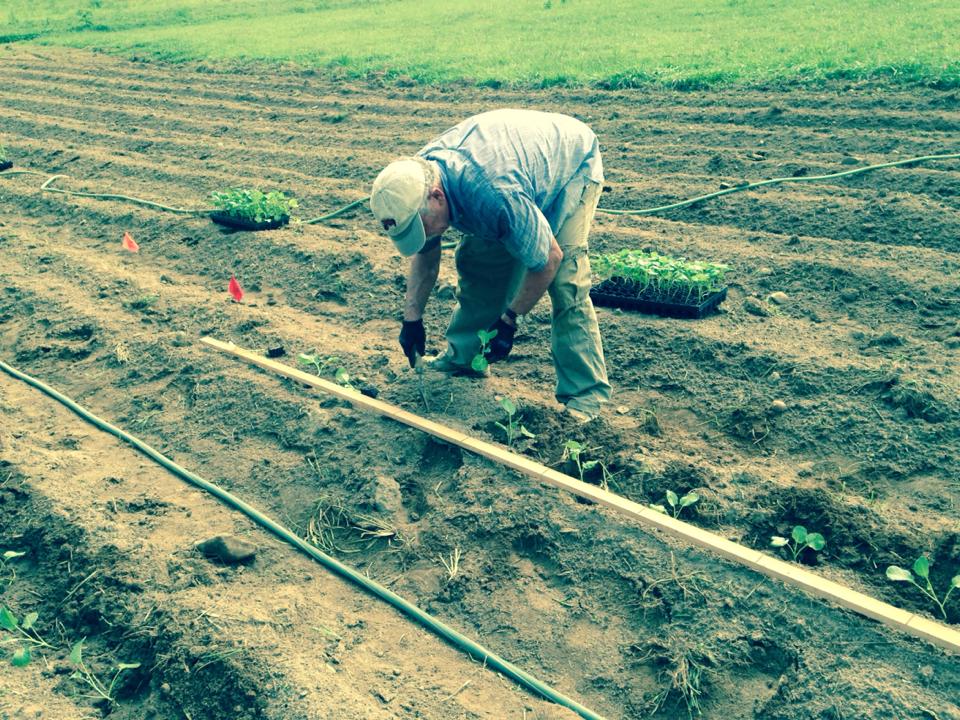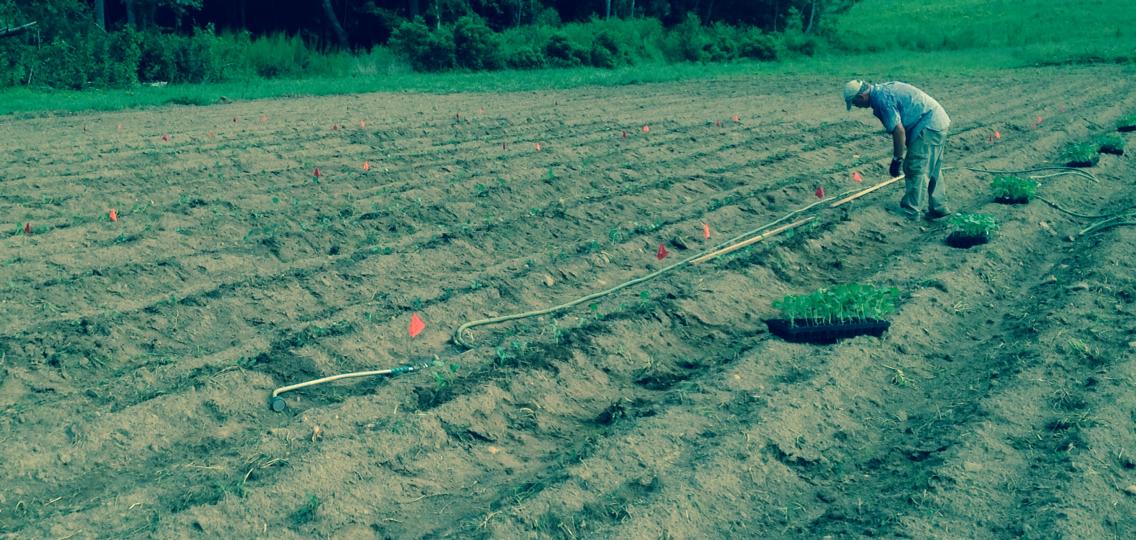by Eric Soderholm, Organic Production Coordinator

When thumbing through the pages of a seed catalog there is a great deal of information to take in regarding how specific crop varieties might perform on your farm. The unfortunate reality is that there is not enough data available concerning which varieties are suited to the unique management techniques, regional conditions and market demands organic growers face here in the Carolinas. This can be particularly frustrating when working with companies that offer performance tips which are based on target regions entirely outside of our own. While a handful of noble advocates for regional seed systems have been making headway on this issue here in the southeastern US – working on conducting and sharing the results of replicated variety trials – the work ahead is still tremendous. Bridging this information gap will require the concerted effort of a network of growers and researchers working collaboratively. Read on to get a very basic introduction to some of the design concepts of variety trials and to learn about how you can connect and share your experiences with CFSA and our network through an upcoming publication called the Seed and Variety Trial Report .Variety trials are an important tool:
• To assist you in determining which varieties perform best for your operation with a replicated and randomized trial, and
• To share the results with the larger sustainable agriculture community so that other growers can make informed decisions when choosing varieties. We all benefit from our mutual work and exchange.

First, let’s consider what constitutes a “true” variety trial. All of us make mental notes, or may even take the effort to write down observations, about crop varieties that seem to perform particularly well from season to season. This less formal process would be considered an observational trial (even if yield, disease frequency or other data is kept) and is often the first logical step in gathering information about what varieties you may want to include in a more regulated, planned variety trial where replication and randomization are critical elements. Replication refers to the practice of growing out multiple plots of each variety included in the trial so that the performance of a given variety is based on its genetics rather than differences in the environment (soil fertility, pH, drainage, etc.). Plots of equal size that represent each of the varieties are arranged into “blocks” in a randomly selected order. This is repeated so that the entire trial ideally consists of at least 3-4 blocks. You can either draw numbers from a hat or use a computer-/calculator- based random number generator to decide the plot order for each block.
Ideally, each block of plots should be as square shaped as possible, rather than one long row to reduce the variability in soil (texture, drainage, pH, etc) that can occur naturally across a field. Each block does not necessarily need to be side-by-side or even in the same field. The most important factor is that each block have conditions that are as uniform as possible. For example, if you once had manure piled in an area of a particular field where crops grow more vigorously, it would not be ideal for any of your trial blocks to be partially within this area and partially outside. Likewise, if you have portions of a field that dry out more quickly than the surrounding area, it would be best to avoid placing a block across these noticeably different field conditions. It is best to avoid areas that are along field edges or tree lines where growing conditions can vary dramatically just a few feet into a field.
Conducting a “true” and statistically meaningful variety trial on your farm will require extra time, considerable attention to detail and thoughtful management to be certain that the results are useful and not skewed by inconsistencies in field treatments. During the course of a proper variety trial all management practices should remain constant across all plots. These include the transplant seeding date, the potting media used and the amount of water and fertilizer flats receive. The same applies to all field practices. ALL plots are treated equally.
Practices may include (but not limited to):
• transplanting date
• amount and frequency of irrigation
• fertilizer application rate and timing
• fertilizer type
• pesticide inputs and timing
• cultivation/weeding
Plan accordingly. Make sure that you have enough time in a day, for example, to weed all the plots with the same thoroughness. Something as simple as a difference of one or two days could “skew the data” come evaluation time.
For an extremely informative description of designing, conducting, and evaluating on-farm variety trials, check out this publication from the Organic Seed Alliance:
On-farm Variety Trials: A Guide for Organic Vegetable, Herb and Flower Producers
https://seedalliance.org/publications#publication_category_title_13

Photos courtesy of Redbud Farm, Certified Organic, as they plant 960 broccoli plants at their Alamance County, NC farm as part of our organic broccoli variety trial.


